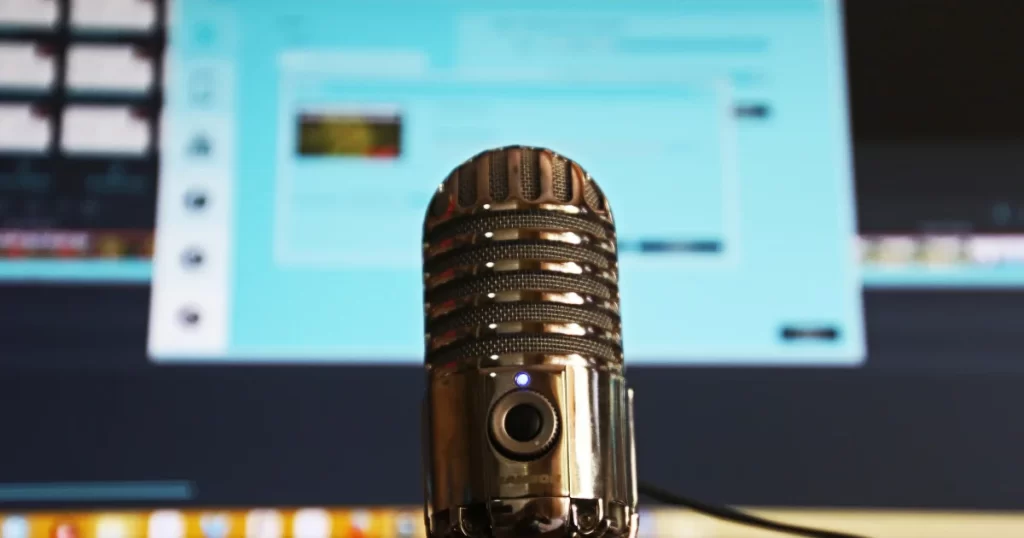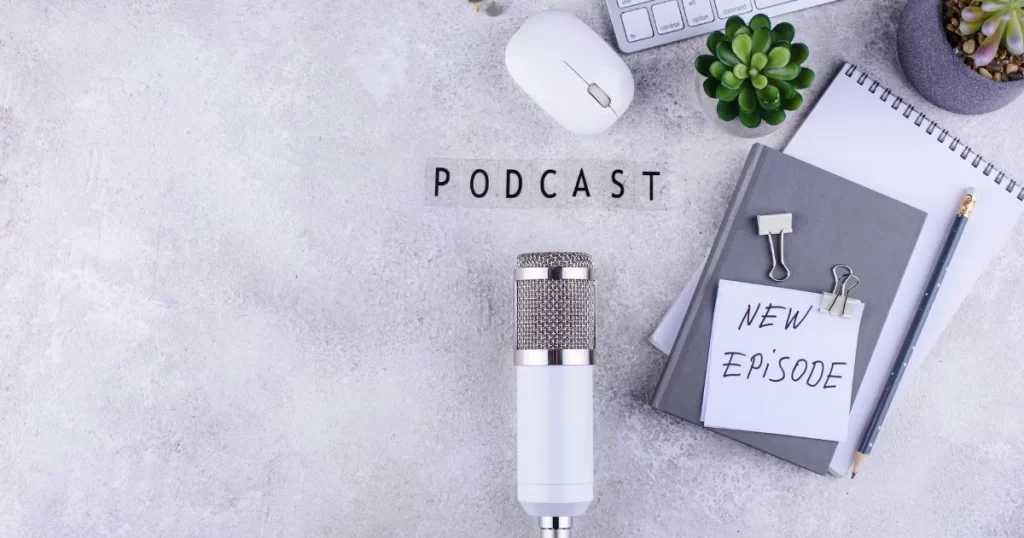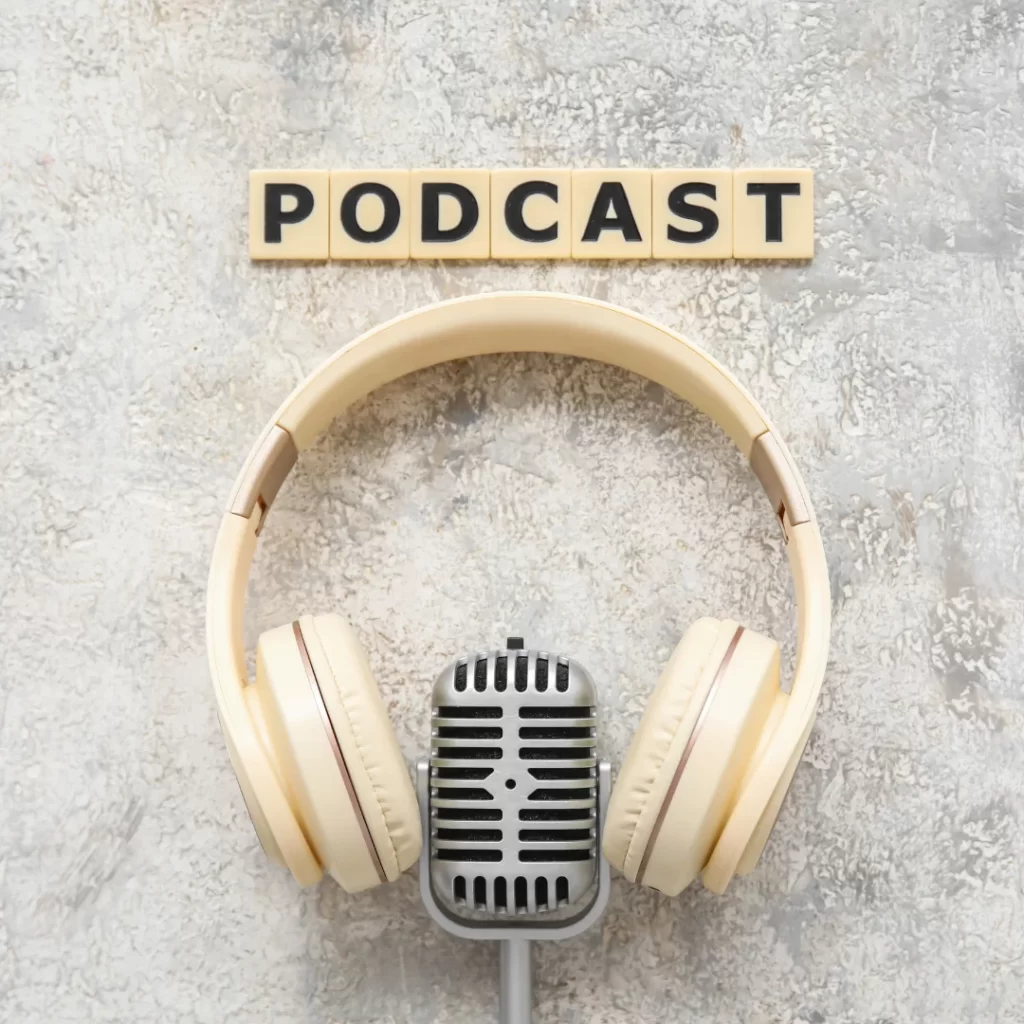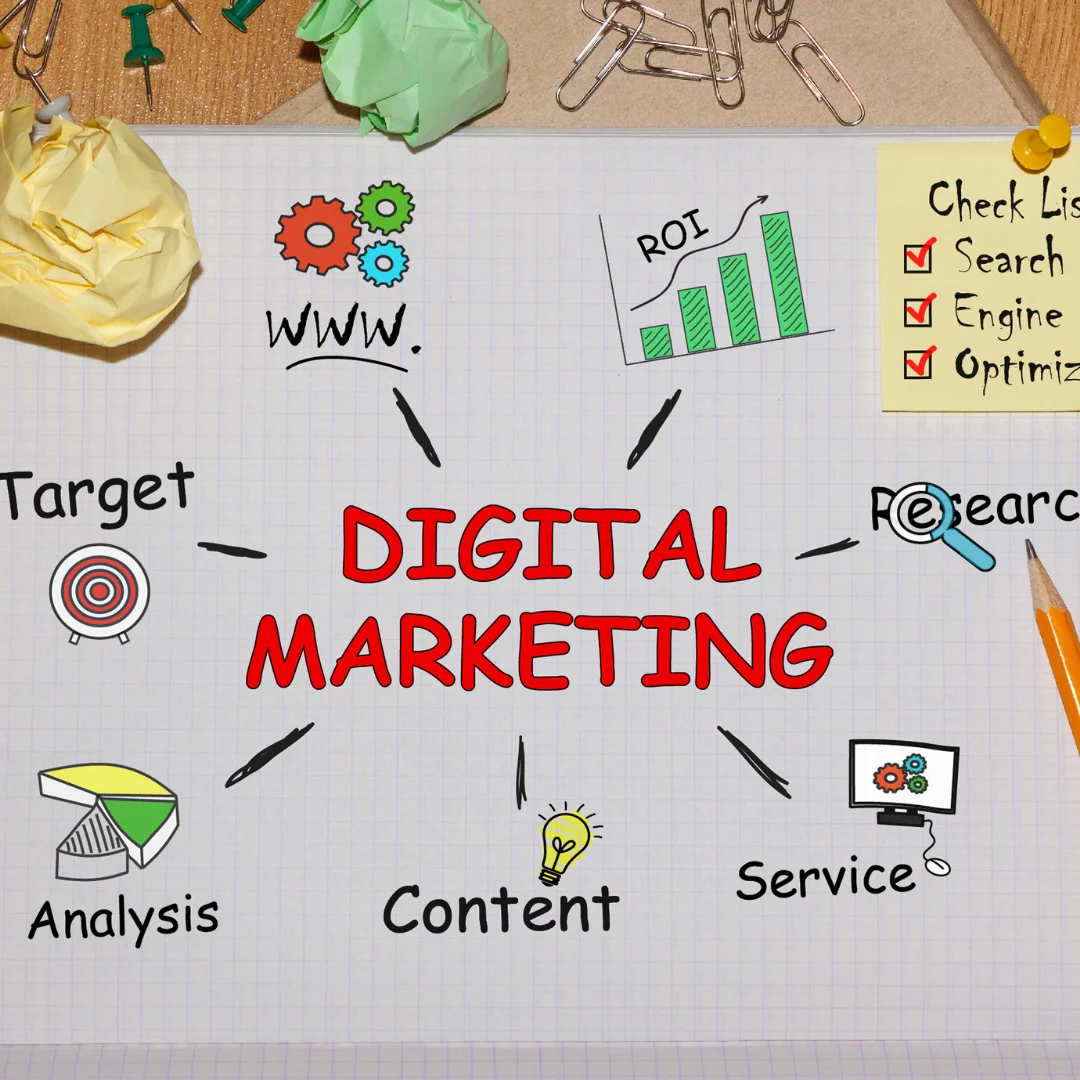Welcome to 2025, where podcasting is no longer just a trendy medium for true crime junkies and self-help seekers. It’s a cultural powerhouse—a digital battlefield where everyone from indie creators to multinational corporations is vying for your earbuds. And guess what? Winning this war isn’t about who shouts the loudest; it’s about who markets the smartest. Enter: podcast marketing.
If you’re here, you probably already know that producing a great podcast isn’t enough. You need listeners—lots of them. In this guide, we’ll dive into eight proven podcast marketing strategies guaranteed to give your listener count the kind of glow-up that makes even TikTok influencers jealous.
1. Understanding Your Target Audience

Before you slap together another episode about your dog’s favorite chew toys, let’s talk target audience. Who are you creating this podcast for?
Understanding your audience is the cornerstone of effective podcast marketing. Without this, you’re basically trying to sell vegan burgers at a Texas BBQ cook-off. Spoiler: It won’t end well.
Why Knowing Your Audience Matters
Let’s break this down: your podcast isn’t for everyone. And that’s okay! The key to podcast marketing is creating content so perfectly tailored to your target listener that it feels like you’re speaking directly to them. When you understand your audience, you’re not just guessing what they want—you’re delivering it.
Think of it this way: Would a podcast about financial planning for Gen Z go into detail about retirement plans? Probably not. Instead, it’d focus on TikTok-friendly budgeting hacks and side hustles. The content matches the audience, and the audience rewards you with loyalty.
Building an Audience Persona
Creating an audience persona is like playing The Sims, but way less fun—and infinitely more useful. Think about your ideal listener:
| Attribute | Example |
|---|---|
| Age | 25-34 |
| Interests | True crime, DIY crafts |
| Daily Habits | Listens during commutes |
| Preferred Platforms | Spotify, Instagram |
This persona should guide every decision you make, from episode topics to promotional strategies. Are your listeners meme-savvy millennials or serious Gen Xers? Knowing this determines your tone, style, and even the platforms you focus on.
Research: The Ethical Stalking
Yes, you need to stalk—ethically, of course. Dive into listener demographics on platforms like Spotify, Apple Podcasts, and even social media. Engage with your audience directly through polls or Q&A sessions. These data points are gold for crafting engagement strategies that work.
💡 Pro Tip: Don’t just rely on your gut. Use analytics tools to gather hard data about your audience. Platforms like Chartable and Podtrac provide insights into listener habits, helping you refine your podcast marketing strategy.
2. Compelling Content Creation

Let’s get real: Your podcast could have the production value of a Hollywood blockbuster, but if your content is duller than a Zoom call on a Friday afternoon, listeners won’t stick around.
Why Content Is King (And Queen, And Court Jester)
Content is the backbone of your podcast marketing strategy. Think of it as the bait that hooks listeners and keeps them coming back for more. But what makes content compelling?
- Relevance: Talk about what your audience cares about. If your podcast is about personal finance, an episode on “Cryptocurrency for Beginners” is probably more engaging than “A History of the Federal Reserve.”
- Emotion: Make listeners feel something. Whether it’s laughter, inspiration, or sheer terror (hello, true crime), emotional connection is key.
- Structure: A clear beginning, middle, and end keeps your episodes organized and your audience engaged.
Strategies for Creating Engaging Episodes
The secret sauce? Storytelling. Humans are hardwired to love stories, so ditch the rambling monologues and structure your episodes like mini-movies:
| Episode Element | Purpose |
| Intro | Grab attention, set the tone |
| Conflict | Introduce the main topic |
| Resolution | Offer solutions or insights |
| Outro | Call to action, teaser for next |
Bonus points for cliffhangers—because who doesn’t love a good binge?
Experiment with Mini-Series
Mini-series are like the Netflix of podcasting. They’re bingeable, cohesive, and create anticipation. Think thematic arcs like “Haunted Houses of the Midwest” or “Startup Fails That Became Wins.” These episodes not only engage listeners but also boost your podcast marketing efforts by giving you multiple opportunities to promote a single theme.
💡 Pro Tip: Consistency is king. Publish episodes like clockwork. You’re building trust, and nothing screams untrustworthy like a podcaster ghosting their audience for three months.
3. Leveraging SEO for Podcasts

“SEO for podcasts? Is that a thing?” Yes, Karen. It’s a thing. Optimizing your podcast for search engines is a marketing cheat code you can’t ignore.
Why SEO Matters for Podcast Marketing
Imagine your podcast is a needle in a haystack. SEO is the magnet that helps listeners find you. By optimizing your episodes for search engines, you increase your visibility—and that means more clicks, downloads, and subscribers.
Keywords: Your Best Friends
Strategic keywords—like podcast marketing (wink, wink)—should live in your episode titles, descriptions, and even transcripts. This makes it easier for algorithms to push your content to the right audience.
| SEO Element | Best Practice |
| Episode Title | Include primary keyword |
| Description | Use 2-3 strategic keywords |
| Tags | Relevant and niche-specific |
For example, an episode titled “Podcast Marketing 101: How to Grow Your Audience” will rank better than “Episode 5: Growing Your Podcast.”
Metadata Magic
Optimize your metadata like it’s your Tinder profile. That means catchy titles, detailed descriptions, and relevant tags. Don’t sleep on show notes—they’re prime real estate for keywords and links to your website or social media.
💡 Pro Tip: Transcribe your episodes. Transcripts not only make your podcast accessible but also boost SEO by providing text for search engines to crawl.
4. Effective Social Media Promotion

If your podcast isn’t on social media, does it even exist? Social platforms are your megaphone—use them wisely.
Why Social Media is Essential for Podcast Marketing
Social media bridges the gap between your podcast and potential listeners. It’s where you can showcase your personality, interact with fans, and amplify your content.
Create Share-Worthy Moments
Snip out the juiciest parts of your episodes and turn them into shareable content. Think audiograms, reels, or even memes. Yes, memes. They’re the lingua franca of the internet.
| Content Type | Platform |
| Audiograms | Instagram, Facebook |
| Reels/Shorts | TikTok, YouTube |
| Behind-the-Scenes | Instagram Stories |
Build a Community
Don’t just post and ghost. Engage with your audience. Reply to comments, ask questions, and create polls. Make your social media pages the kind of place people want to hang out.
💡 Pro Tip: Focus on 2-3 platforms where your audience is most active. Spreading yourself too thin dilutes your efforts and makes it harder to build meaningful connections.
5. Cross-Promotion and Guest Appearances

Why play solo when you can collaborate? Cross-promotion is the ultimate win-win strategy in podcast marketing, giving you access to entirely new audiences while allowing you to share the spotlight with fellow creators. Let’s dive into how to do this without looking desperate.
The Power of Guest Spots
Imagine this: you’re a guest on a popular podcast within your niche, and suddenly, their listeners are now your listeners. Appearing on another podcaster’s show introduces you to their audience like a warm referral at a dinner party—except instead of awkward small talk, you get to shine with your expertise and charm.
But here’s the kicker: you’ve got to bring your A-game. No one wants to hear a guest mumble about how they “kinda got started” in their field. Share value-packed insights, tell captivating stories, and sprinkle in a bit of your personality. Leave their audience thinking, “Where has this person been all my life?”
Finding the Right Collabs
Before you slide into someone’s DMs asking for a collab, make sure it’s a good fit. Stick to your niche. If your podcast focuses on sustainable living, teaming up with a host who reviews obscure action movies might not make much sense. Sure, opposites attract, but when it comes to podcasting, shared audience interests are everything.
Use platforms like Podchaser to find potential collaborators. Look for podcasts with similar audience sizes and complementary themes. And if you’re unsure whether a podcaster’s audience will vibe with yours, listen to a few episodes first. Research beats regret every time.
Cross-Promotion Done Right
Cross-promotion isn’t just about guest spots. You can also trade shoutouts in episodes or co-create content. For example, run a joint giveaway: “Listen to both of our podcasts this week and comment your favorite episode to win a freebie!” It’s engagement gold.
💡 Pro Tip: Collaborating with podcasts outside your immediate niche can work if there’s some overlap in audience interests. Think outside the box but inside the Venn diagram.
6. Email Marketing Strategies

I know what you’re thinking, email marketing? The dinosaur of digital marketing that refuses to go extinct. Why? Because it works—when done right. Let’s break down how to use email marketing to supercharge your podcast marketing efforts.
Build That List
First things first: you need an email list. But don’t just slap a “Subscribe to my newsletter” box on your website and call it a day. Entice people to join with irresistible incentives.
Ideas to Grow Your Email List:
| Incentive | Why It Works |
|---|---|
| Exclusive Bonus Content | Give listeners behind-the-scenes tidbits or extra episodes. |
| Early Access to Episodes | Everyone loves being in the know before anyone else. |
| Personalized Shoutouts | Promise to thank subscribers on air—everyone loves a little ego boost. |
| Episode Naming Rights | Allow them to vote on or suggest the next episode title. |
Once you’ve built your list, maintain it. This isn’t a “set it and forget it” situation. Keep the emails flowing—but not so much that they’re marked as spam.
Craft Killer Campaigns
Your emails should be the highlight of someone’s inbox, not the reason they roll their eyes. Avoid walls of text. Use engaging visuals, snappy headlines, and a conversational tone. Bonus points for adding humor or personal anecdotes that tie into your podcast.
Email Structure That Works:
- Subject Line: Make it irresistible. Think “How We Survived the Great Podcast Apocalypse” or “Your Monday Just Got Better” (with your episode link inside).
- Body: Include a brief summary of the episode, why they’ll love it, and a direct link to listen.
- Call-to-Action: Ask them to share the episode, leave a review, or forward the email to a friend.
💡 Pro Tip: Use tools like Mailchimp or ConvertKit to automate your campaigns and track engagement metrics.
7. Utilizing Podcast Directories and Platforms
Imagine your podcast is a blockbuster movie. Podcast directories are your streaming platforms. Getting listed on as many directories as possible ensures that potential listeners can find you wherever they prefer to tune in.
Optimize Your Listings
Your podcast listing should scream, “I’m worth listening to!” That means:
- High-Quality Cover Art: Invest in professional, eye-catching visuals. Think of this as your podcast’s Tinder profile picture.
- Engaging Descriptions: Write a summary that hooks readers immediately. Use action-oriented language and highlight what makes your podcast unique.
- Relevant Tags and Categories: If your podcast is about tech, don’t tag it under “Cooking.” Use specific and accurate tags to improve discoverability.
Directories You Can’t Ignore
Sure, Spotify and Apple Podcasts dominate the scene, but don’t overlook smaller platforms. Here’s a breakdown:
| Directory | Why It Matters |
| Spotify | Massive reach and user-friendly interface. |
| Apple Podcasts | Essential for iOS users and industry credibility. |
| Overcast | Popular among tech-savvy listeners. |
| Pocket Casts | Offers curated recommendations. |
| Google Podcasts | Ideal for Android users. |
💡 Pro Tip: Regularly update your listings with fresh keywords and episode links to stay relevant in search results.
8. Analyzing Data and Feedback
Podcast marketing isn’t a “set it and forget it” game. To grow, you need to analyze what works and what doesn’t. Fortunately, podcasting platforms provide you with more data than a conspiracy theorist’s corkboard.
Dive Into Analytics
Start with the basics: download stats, listener demographics, and episode performance. Look for patterns. Are your listeners tuning out halfway through an episode? Maybe your intros are too long. Are certain topics outperforming others? Double down on those.
Useful Tools for Analytics:
| Tool | Features |
| Spotify for Podcasters | Tracks streams, listener demographics, and engagement. |
| Google Analytics | Monitors traffic to your podcast’s website. |
| Chartable | Analyzes reviews and helps track cross-promotion success. |
| Podtrac | Offers detailed insights into audience behavior. |
Conduct Listener Surveys
Want to know what your audience thinks? Ask them. Surveys are the easiest way to get actionable feedback straight from the source.
Questions to Ask in Surveys:
- What’s your favorite episode so far?
- What topics do you want us to cover in the future?
- How did you discover our podcast?
Use tools like Typeform or Google Forms to create surveys that are easy to complete and visually appealing. And don’t forget to incentivize participation—a freebie or shoutout goes a long way.
💡 Pro Tip: Combine survey results with analytics data to get a 360-degree view of your podcast’s strengths and weaknesses.
Conclusion: Embracing the Future of Podcast Marketing Strategies
Podcasting in 2025 is not for the faint-hearted. It’s a thriving, competitive arena where only the most innovative and consistent creators rise to the top. But you’re not here to play small—you’re here to conquer the podcast marketing world.
Why Podcast Marketing Matters More Than Ever
With millions of podcasts available, standing out requires more than just good content. Podcast marketing is your ticket to expanding your audience, building a loyal community, and monetizing your passion. Whether it’s through email marketing, social media, or mastering SEO, every effort you make compounds over time.
FAQs on Podcast Marketing
1. How can I start with podcast marketing if I’m new? Start small but strategic. Focus on understanding your target audience, optimize your podcast listings, and leverage social media to promote episodes. Consistency is key.
2. How important is SEO in podcast marketing? SEO is crucial for discoverability. Use keywords naturally in your titles, descriptions, and show notes. Transcripts also help search engines index your content.
3. What’s the best way to grow my email list for podcast marketing? Offer exclusive content, early access to episodes, or interactive opportunities like polls. Make subscribing easy and promote your list in every episode.
4. Should I invest in paid ads for podcast marketing? Paid ads can be effective, but only if your organic strategies are solid. Test small budgets on platforms like Facebook or Instagram to see what resonates.
5. How do I measure the success of my podcast marketing efforts? Track metrics like listener growth, download numbers, and audience engagement. Use analytics tools to identify trends and refine your strategies.
So, what are you waiting for? Embrace these podcast marketing strategies, infuse them with your unique style, and watch your podcast flourish. Remember: persistence, creativity, and a dash of humor are your best allies. Now, go turn those listeners into raving fans. Happy podcasting!





